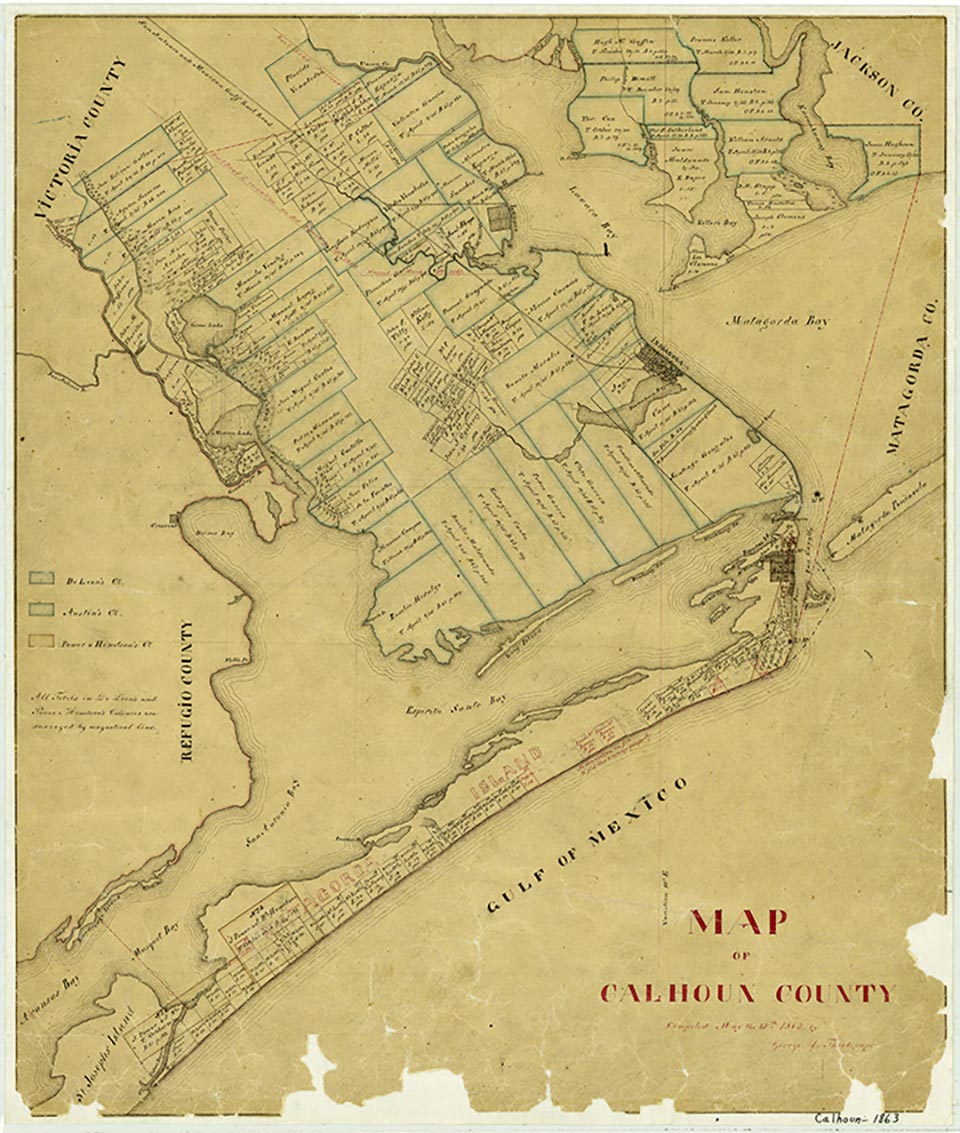Indianola

The port of Indianola, on Matagorda Bay in Calhoun County, was founded in August 1846 as Indian Point by Sam Addison White and William M. Cook. In 1844 a stretch of beach near the point had been selected by Carl, Prince of Solms Braunfels, commissioner general of the Adelsverein, as the landing place for German immigrants bound for western Texas under the sponsorship of the society. The German landing area was referred to, briefly, as Karlshafen. One immigrant, Johann Schwartz, built the first house in the area in 1845. Indian Point became firmly established as a deep-water port during the Mexican War. For thirty years its army depot supplied frontier forts in western Texas. Anglo-American landowners in the area had the site surveyed in 1846 and began selling lots. The post office was opened in September 1847, and stagecoach service to the interior began in January 1848. Mrs. Angelina Belle Eberly, heroine of the Archives War in Austin, moved to Indian Point in 1848 and operated hotels there until her death in 1860. In February 1849 the name of the growing town was changed to Indianola. Indianola was the county seat of Calhoun County from 1852 to 1886. The town grew rapidly, expanding three miles down the beach to Powderhorn Bayou, following its selection by Charles Morgan as the Matagorda Bay terminus for his New York-based steamship line. In a short time, Indianola achieved the rank of the second port of Texas, a position it held until the catastrophic hurricane of September 16, 1875, devastated the low-lying city and caused great loss of life.
Indianola was the eastern end of the southern Chihuahua Trail, the military road to San Antonio, Austin, and Chihuahua, Mexico, as well as the road to San Diego, the shortest overland route to the Pacific. It became the chief port through which European and American immigrants flowed into western Texas. In 1850 the United States Boundary Commission landed in Indianola, en route to El Paso del Norte to begin the survey of the boundary with Mexico, as required by the Treaty of Guadalupe Hidalgo. The first newspaper in Indianola was the Bulletin, founded in 1852 by John Henry Brown. Other papers of the period were the Courier, the Times, and the Indianolan. The town was incorporated in 1853, the year in which City Hospital began operation. In 1856 and 1857 two shiploads of camels were landed at Indianola. Under the direction of Secretary of War Jefferson Davis, the animals were used in one of the most extraordinary experiments in the history of the department, the use of camels in the transportation of military supplies in the southwestern United States. Indianola was bombarded by Union gunboats on October 26, 1862, then occupied and looted. The Union forces withdrew the following month but returned in November 1863, seized the city again, and remained until 1864. The world's first shipment of mechanically refrigerated beef moved from Indianola to New Orleans on the Morgan steamship Agnes in July 1869, opening a new era in the transportation of perishable goods. Railroad service from Indianola to the interior began in 1871. With a population of more than 5,000, Indianola was at the peak of her prosperity when the 1875 hurricane struck. The town rebuilt on a smaller scale and then was almost obliterated by the hurricane of August 20, 1886, and the accompanying fire. By 1887 the site had been abandoned.
Brownson Malsch | © TSHA

Adapted from the official Handbook of Texas, a state encyclopedia developed by Texas State Historical Association (TSHA). It is an authoritative source of trusted historical records.

- ✅ Adoption Status:
Belongs to
Indianola is part of or belongs to the following places:
Currently Exists
Yes
Place type
Indianola is classified as a Town
Associated Names
- (Indian Point)
- (Karlshafen)
- (Powderhorn)
Location
Latitude: 28.51194490Longitude: -96.48747500
Has Post Office
No
Is Incorporated
No
Population Count, 2009
200
